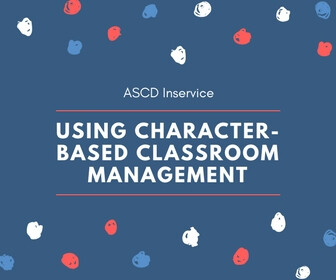ASCD launched its latest expansion to the Whole Child approach to education at its Conference on Educational Leadership on Nov. 8. The Whole Child Network is a global network of schools focused on the same goals, engaged in the same processes, and utilizing the same tools and resources. Schools that sign up get automatic access to a range of tools, guides, resources and an expanded Whole Child framework of benchmarks, building off our tenets (2007) and indicators (2010).
We have purposefully kept joining the network free – to any individual, school, or district – so as to increase use of and access to the approach. We believe that the time is right to purposefully move schools and systems toward a more child-centric, holistic and well-rounded Whole Child approach to education and we believe the Whole Child Network can play a significant role in getting there.
Why? Just look at what has occurred this year alone.
- The Aspen Institute National Commission on Social, Emotional, and Academic Development, launched their groundbreaking final report From a Nation at Risk to a Nation at Hope. This report highlighted key areas for improvement on A Nation At Hope:
“AFTER TWO DECADES OF EDUCATION DEBATES THAT INSPIRED DEEP PASSION AND DEEPER DIVISIONS, WE HAVE A CHANCE FOR A FRESH START. A GROWING MOVEMENT DEDICATED TO THE SOCIAL, EMOTIONAL, AND ACADEMIC WELL-BEING OF CHILDREN IS RESHAPING LEARNING AND CHANGING LIVES ACROSS AMERICA. ON THE STRENGTH OF ITS REMARKABLE CONSENSUS, A NATION AT RISK IS FINALLY A NATION AT HOPE.”
The Commission set out six recommendations, the first of which sets the scene for the report. Recommendation 1: Set a clear vision that broadens the definition of student success to prioritize the whole child.
- Every Student Succeeds Act (ESSA). The follow up to the No Child Left Behind Act (2001) set out to increase attention to aspects of learning beyond just academics and promote flexibility and innovation within districts and schools, as well as promote collaboration with local communities. In addition, the act required states to provide at least one non-academic accountability measure. As cited in our ASCD ESSA Essential for Educators, “[T]his requirement provides a unique opportunity to expand the definition of student success and move toward a whole child accountability system.” As a result, 28 states have written “whole child” back into their ESSA States Plans and 13 states have written the ASCD & CDC Whole School, Whole Community, Whole Child Model (WSCC) directly into their plans.
- States taking a whole child approach to education directly. Just over the last few months, we have witnessed more states dedicating funding and strategic planning efforts toward a Whole Child approach. This includes this sampling of states:
- California – California One System Serving the Whole Child
- Georgia – Education of the Whole Child (GaDOE)
- Hawaii – Whole-Child Supports (Hawaii DOE)
- Illinois – ISBE Supports the Whole Child
- Michigan – Whole Child (State of Michigan)
- Oregon – The Eight Critical Elements
In addition to the listed states, Tennessee recently announced their commitment to the whole child, with Education Commissioner Penny Schwinn saying that “We have to think differently. It is that urgent,” of students grappling with chronic family trauma like poverty, addiction, and abuse. “There are opportunities right now for us to say we’re going to take a national leadership position in this work.”
Educators have been discussing the need for a whole child approach to education for a while now. Policymakers, communities, and families, are adding additional strength and impetus to this discussion and movement.
In 2007, when we launched The Learning Compact Redefined: A Call to Action to launch our Whole Child approach we asked,
“IF DECISIONS ABOUT EDUCATION POLICY AND PRACTICE STARTED WITH ‘WHAT WORKS FOR THE CHILD?’ HOW WOULD RESOURCES—TIME, SPACE, AND HUMAN—BE ARRAYED TO ENSURE EACH CHILD’S SUCCESS? IF THE STUDENT WERE TRULY AT THE CENTER OF THE SYSTEM, WHAT COULD WE ACHIEVE?”
In 2019, with the launch of the Whole Child Network, ASCD has provided the framework and the processes and tools to help schools in implementing and growing a Whole Child approach to education, ensuring that each child, in each school, and in each community, is healthy, safe, engaged, supported, and challenged.
Sean Slade is an education leader, speaker, and author, with nearly three decades of experience in education in the U.S. and globally. He serves as Head of BTS Spark, North America, the social impact arm of BTS focusing on educational leadership development. Prior to BTS Spark, Sean was senior director of global outreach at ASCD, where he launched and grew the ASCD Whole Child Network across 56 countries and led the development of the Whole School, Whole Community, Whole Child Model (WSCC) with the CDC. His latest book is The Power of the Whole: What is Lost by Focusing on Individual Things.








